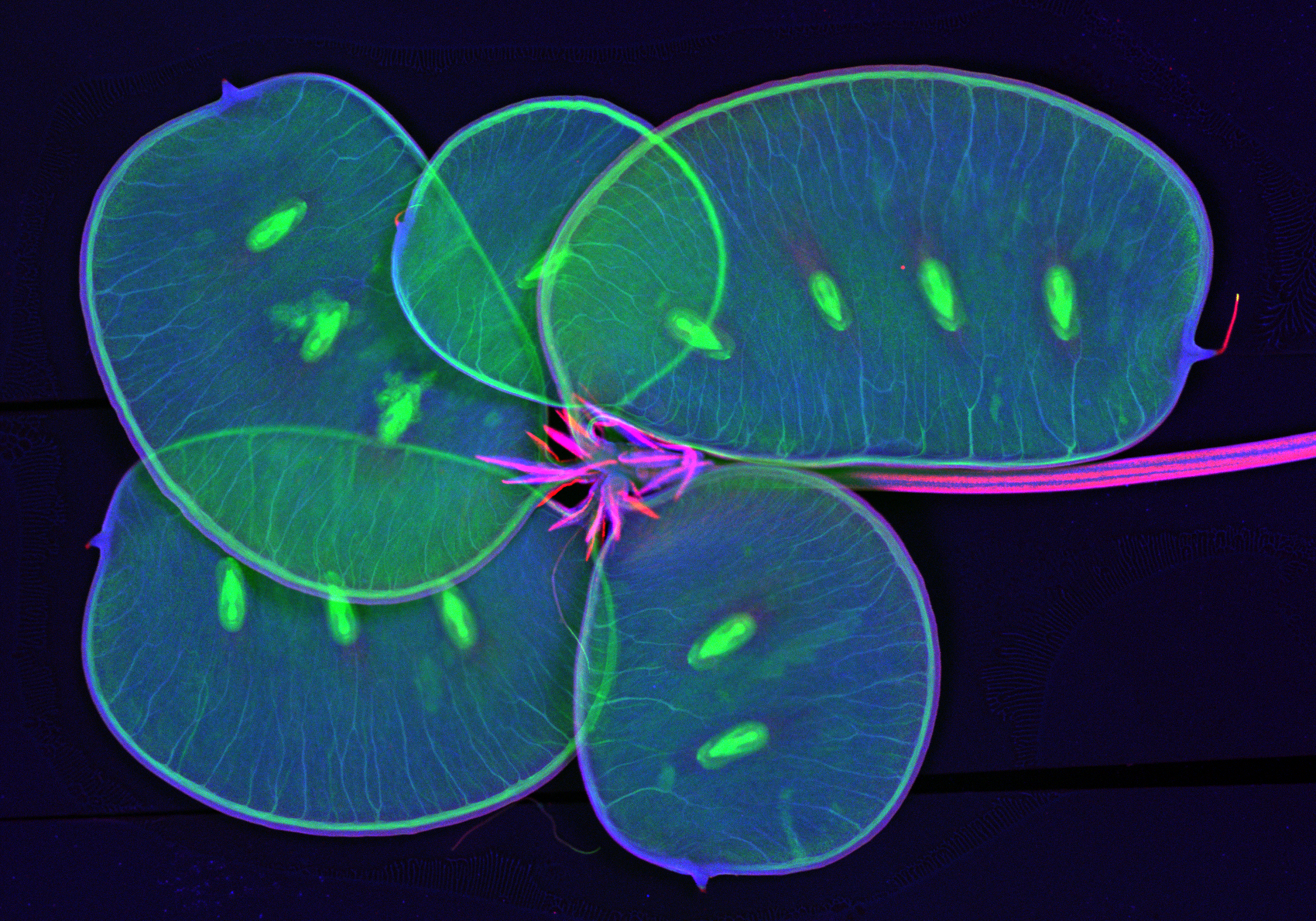Metals can be recovered from bio-ore in a process known as phytomining. Battery metals are an important target for phytomining and a number of plants are now being tested for their ability to concentrate them. Farming for nickel, cobalt, and manganese is currently within reach, with nickel being one of the most commonly accumulated metals.
Dr Antony Van der Ent at the University of Queensland (UQ) studies the physiology of these metal-accumulating plants from around the world and their potential for phytomining. He uses micro X-ray fluorescence (XRF) at Microscopy Australia’s UQ facility to visualise the distribution of the metals in plant structures.

X-ray fluoresence image of a Neptunia amplexicaulis seed pods showing calcium in red, selenium in green and potassium in blue.
One is the Australian native, Neptunia amplexicaulis, one of the strongest selenium hyperaccumulators, capable of holding more than 10 g/kg selenium in its leaves. They can be a source of both selenium metal, and organic selenium compounds for pharmaceuticals. The team has developed a way to propagate these plants in culture for research and phytomining
Another is the macadamia. Dr Van der Ent correlated leaf-scale studies undertaken at UQ, with cellular-level imaging from the Australian Synchrotron revealing that manganese accumulates in specific leaf structures and not in the nuts. This could provide a foundation to guide development of macadamias as a dual-purpose crop, providing both luxury food and battery metals.
Recently, a proof-of-concept trial using a mix of plants that each accumulates a particular metal, successfully extracted multiple metals from mine tailings at the Dugald River and Mt Isa zinc–lead–copper–silver mines, paving the way for practical development of phytomining of toxic mine tailings, bringing new meaning to ‘green mining’.
Ref: P. N. Nkrumah et al., Plant Soil 2022
DOI: 10.1007/s11104-022-05586-z
Micro X-ray fluorescence image of Neptunia amplexicaulis showing selenium in green, calcium in red, and potassium in blue.
November 7, 2022